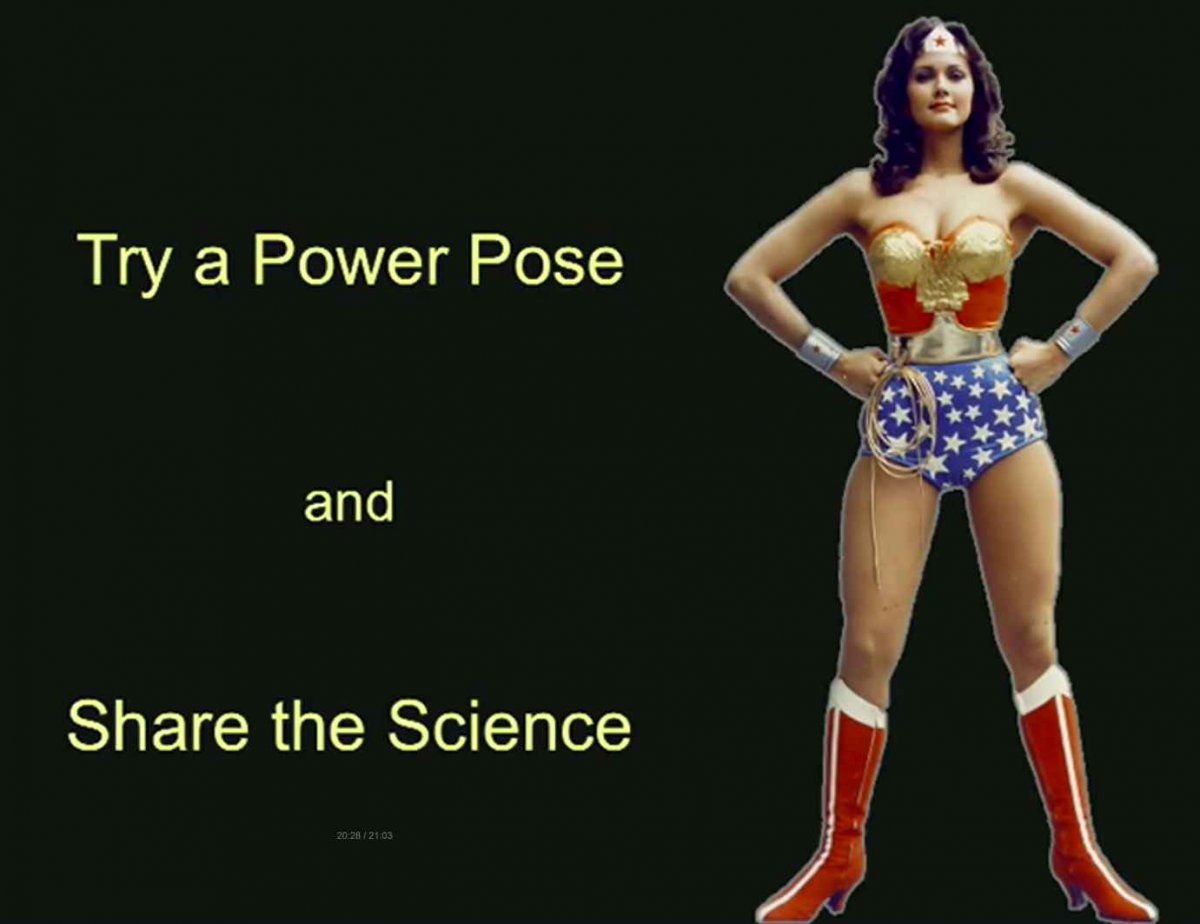By Sally Stone
Shift Your State with the Power of Posture
When I worked in schools as a classroom teacher, coach, and yoga teacher, I taught my students about how their posture and body language communicates whether they’re engaged and listening as well as how they’re feeling, both toward others and themselves. I modeled to them how crumpled shoulders and hanging heads look sad, but how straight backs appear powerful.
This TED talk by social psychologist Amy Cuddy validates but also goes beyond what body language communicates to explain how the way we hold ourselves actually changes our brain chemistry.
Hunch up and you’ll fill with cortisol and anxiety. Stand up straight and you’ll fill with testosterone and confidence. In other words, just as autosuggesting positive phrases to yourself changes your state, so does changing the way you hold your body.
Even if you hold yourself in a “power position” when you don’t feel it, your brain chemistry STILL changes to reflect that posture. This is also the transformative power behind postural correction in physical therapy.
After an accident or an emotional trauma, we hunch up to guard our vulnerability. After my bike accident, physical therapy became a moment-by-moment act of uncrumpling my body. Day after day, I practiced standing and sitting up straight, opening myself up, and transforming not only my body, but my mind back into the upright and courageous person I’d been before the crash.
As you change your posture and body language, you’ll notice your mind and emotions talking back. Perhaps even fighting back. What are you saying to yourself as you pull yourself up? Are you encouraging yourself or pushing yourself down into a habitually small self? If you’ve experienced trauma, be easy on yourself. Give yourself time. Because if you hold a lot of fear or trauma in your body, changing your physical carriage may take practice, and even the support of a coach or other professional, as you move through the feelings and learn to accept the unfamiliar, but welcomed, chemical changes in your brain. The process of pulling myself up into good posture from a physically crippling nervous system disorder took about six years of conscious practice coupled with many other supporting practices. And I’m still tweaking.
Hypnosis and guided imagery can help to clear away the chatter of old self-talk tapes, bring relaxation to the body, and support the chemical changes of confidence and strong posture. Take a deep breath in and hold it for a moment. As you release your breath, feel all your stress travel down your chest and legs and out your feet. Relax. Now take another deep breath in and hold it for a moment. Then let all the stress you hold on your shoulders fall away as your hands gently open to let go and receive. Allow your breath to deepen.
Now imagine all the old messages and traumas from your life coming loose from your mind and body and floating away in cartoon voice bubbles. If you like, you can imagine the people that said those words, events that happened, and actual phrases of old beliefs. Allow these bubbles to float away like helium balloons disappearing high into the sky.
Now feel your breath deepen as you become more and more relaxed. Lighter and lighter, with more and more room inside yourself for expanding into your personal power. As you expand, stand up and try on the Wonder Woman pose below. Feel your personal power grow.
Cuddy suggests: Hold the “wonder-woman” pose for two minutes before your next interview, speech, or other high stress event and your anxiety will go down as your testosterone and confidence go up.
Her nugget: “Don’t fake it til you make it. Fake it til you become it.”
Hypnosis is a great tool that supports becoming what you want to embody.
Use the contact form to schedule your initial complimentary consultation.




